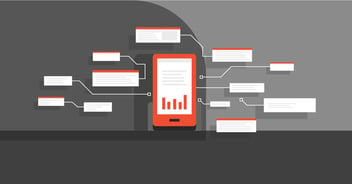The success of a health app requires striking the right balance between all of these different factors and players. Vincit has proudly executed many custom healthcare mobile app development projects to date. We will walk you through our process to offer you a successful roadmap to building a great healthcare application.
Business Analysis
The first step to building a successful healthcare application is understanding your healthcare business organization, the industry, and where the application will fit into your business. This step is critical.
It is no secret that healthcare is a complex industry with many parties, including but not limited to:
-
Doctors and other healthcare practitioners
-
Insurance companies
-
Patients
-
Healthcare administrators
With so many different types of medicinal approaches and specialists in the industry, you can imagine the complexity of developing an application to suit the industry’s needs. Considering the whole field of healthcare at once may be overwhelming or daunting, but it is important to understand exactly where your services and needs fit into the bigger picture.
Within the healthcare industry, every business is unique. In order to create an effective healthcare application, we need to understand what systems the application must communicate with, who will use the application, and what exactly each user group will use the application for.
One point where a lot of organizations often go wrong is assuming they know who will use the application, but failing to consider what the important features might be for each group, and how user-friendly the application should be for the different user groups. For example, the user interface for patients may need to be much more simple and easy to use than the user interface for administrative staff because staff will receive much more training on the systems you use to run your business.
Many apps come out of the gate strong, but the use cases stagnate when the users don’t adopt or continue to use the application, often due to the low relevance of the features. This is where truly understanding your user groups, what they need, and how user-friendly your app needs to be for each group comes into play.
UI Design
In order to balance user groups and their different needs, a UI/UX focus must take center stage in the design process. This is the exploratory part of application development, where businesses can show off their creativity and bring their abstract concept to life. During this stage, we discuss all of the great ideas and concepts you like. Brainstorming and thoroughly understanding your needs is key to developing a successful healthcare application for you and your needs.
As mentioned, this is where our deep expertise in design, user experience, and a strong understanding of the important application requirements, such as HIPAA compliance and user experience, comes into play.
Design and UI must not ignore important functionality and security. It is equally important to the success of your application that the app not be so feature-based that it becomes a confusing mess of menus for users to get lost in. The juggling act of ensuring the app is both visually pleasing and easy to use for all user parties becomes a challenge in itself that can often require user studies, continuous ideation, and, ultimately, merging to determine a final outcome.
Agile Development
After the first stage of research, brainstorming, and exploring, we get developing. The sooner we start working out the details of your application, the better.
During the development stage, we hold weekly sprint meetings to allow our teams to communicate with yours. In these meetings, the prior week’s progress is discussed. We look at any concerns that may have arisen, reprioritize our backlog items, and plan out what we’ll work on for the next week. These regular meetings allow the Product Owner to mention any pivots or changes to features and priority that may have come up, and they allow the Project Owner to bring up any recent challenges or sticking points. When dealing with this level of complexity and speed, constant communication is imperative. By meeting weekly, our team and yours can navigate road bumps, make changes, and problem solve on the fly. These meetings minimize the risk of oversight and blind spots. By constantly communicating, we can frequently revisit requirements and ensure that we are all always on the same page.
Integrations
During development, we ensure that your application can seamlessly communicate with the variety of databases, softwares, and security programs that your business may have or need. When third party software is integrated and regularly updated, it sometimes introduces the risk of the application breaking down and becoming unusable.
With every integration, there is always some level of debugging and creative problem solving that needs to be considered. There is no worse situation than completing an entire project just to find that it won’t work with one of your integral systems. That is why the business analysis and agile development are key steps in the process. We can avoid these issues and ensure that everything is accounted for along the way.
Security & HIPAA Compliance
Healthcare institutions have the responsibility of protecting patients’ private data. Because of this unique requirement, security is a priority when developing healthcare applications.
The Health Insurance Portability and Accountability Act of 1996 (HIPAA) outlines the lawful use and disclosure of protected health information (PHI). Because PHI will be stored and accessed through your healthcare app, it is important to ensure that this information will be secure and accessible for your users.
In addition to risking your patients’ private information, the consequences of HIPAA violations can range from monetary fines to criminal charges that can result in jail time. The financial penalties for HIPAA noncompliance are based on the level of negligence, and can range from $100 to $50,000 per violation (or per record), with a maximum penalty of $1.5 million per year for violations of an identical provision.
These specific requirements and concerns make the development of healthcare applications even more difficult, as the development team has to ensure that the application and the organization using it is following HIPAA guidelines and minimizing any risk of infractions.
Maintenance
The only constant you can count on in business is change. As you continue to use your healthcare application into the future, databases will get updated and third party systems will get upgraded. Because of the need to grow and stay current, it is important to regularly maintain your app. By performing maintenance work on the healthcare applications we develop, we ensure that the applications are always up to date and performing at the highest level possible, while evolving to match how users are interacting with the application.
If you’d like to see a case study that shows our work in action, check out our healthcare application project with GE. We would be happy to talk to you about your own healthcare application development needs to see how we can help. Reach out to our team today to start making the app that you are dreaming of into a reality.



